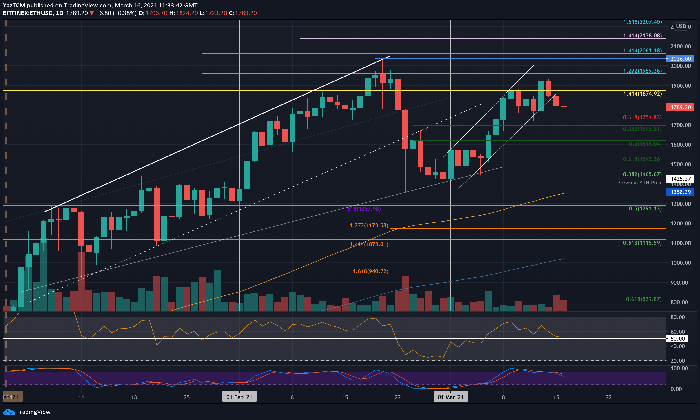In light of recent events, Zoom security vulnerabilities have garnered significant attention, especially among users engaged in cryptocurrency transactions. Notably, Jake Gallen, CEO of Emblem Vault, suffered a staggering loss of over $100,000 in digital assets due to a malicious act facilitated through a Zoom meeting. This incident underscores the growing concerns surrounding remote access security, particularly in the context of online meetings where unsuspecting users can fall victim to schemes like cryptocurrency scams. Cybercriminals have become increasingly adept at exploiting these vulnerabilities, utilizing tactics to steal sensitive information and drain crypto wallets. As illustrated by this unfortunate situation, understanding the risks associated with Zoom meeting risks is paramount for anyone involved in the digital asset space.
The current landscape of virtual collaboration tools reveals critical weaknesses that can jeopardize users’ financial security. Recent warnings about vulnerabilities in digital communication platforms highlight the potential for devastating losses, particularly in crypto communities. In this context, incidents involving remote collaboration are a wake-up call, illustrating how the misuse of technology can lead to digital asset theft. Cyber threats in this realm are often amplified through sophisticated social engineering techniques, where hackers manipulate users into granting unauthorized access. Therefore, remaining vigilant against these hacking in crypto tactics is essential for protecting one’s digital investments.
Understanding Zoom Security Vulnerabilities
In today’s digital age, security vulnerabilities inherent in platforms like Zoom can have severe repercussions, particularly for users involved in the cryptocurrency space. With the rise of remote access capabilities, malicious actors can exploit defaults that facilitate unauthorized control over an individual’s computer. The case of Jake Gallen, who experienced significant asset loss due to malware deployed during a Zoom meeting, epitomizes the risks that users face when engaging in online activities without adequate security measures in place. Alongside common concerns, these vulnerabilities can inadvertently pave the way for hackers to access sensitive financial information.
Failure to address security settings can result in catastrophic outcomes. When remote access features are enabled by default, it allows potential attackers not just to invade a user’s privacy but also to compromise their entire network, leading to substantial financial losses. Users should remain vigilant, regularly review their security configurations, and adhere to best practices to shield their assets against evolving threats. Furthermore, maintaining up-to-date knowledge about security vulnerabilities associated with video conferencing platforms like Zoom can empower individuals to take necessary precautions before engaging in conversations that could affect their cryptocurrency portfolios.
The Rise of Cryptocurrency Scams in Remote Meetings
Cryptocurrency scams have proliferated in recent years, often facilitated by remote meetings through popular video conferencing platforms. The unfortunate incident involving Jake Gallen reveals the increasing trend where hackers leverage social engineering tactics within these digital spaces to exploit unsuspecting crypto investors. By disguising themselves as legitimate authority figures or trusted contacts, scammers can manipulate their targets into granting access to sensitive financial credentials and assets.
As remote work and virtual meetings continue to dominate, the confluence of cryptocurrency and video conferencing creates an inviting environment for fraudsters. It becomes imperative for users to recognize potential warning signs, such as unsolicited requests for remote access or peculiar behavioral changes in collaborators. By fostering a culture of awareness and proactive security practices, users can significantly mitigate their risks against these evolving scams that threaten the integrity of their digital assets.
Frequently Asked Questions
What are the Zoom security vulnerabilities that can lead to cryptocurrency scams?
Zoom security vulnerabilities include default remote access settings that can be exploited by malicious actors to gain unauthorized access to users’ devices. This has been highlighted through cases like that of Jake Gallen, where a hacker utilized Zoom to install malware that led to significant digital asset theft. To avoid such issues, it’s crucial to disable remote access features in Zoom and stay vigilant during remote meetings.
How do Zoom meeting risks contribute to digital asset theft?
Zoom meeting risks can significantly contribute to digital asset theft by allowing cybercriminals to manipulate unsuspecting users into granting access to their devices. The case involving Jake Gallen illustrates how malware deployed during a Zoom call can steal sensitive cryptocurrency credentials, resulting in financial loss. Users should take precautions to protect their digital assets by strengthening their Zoom security settings.
Can hacking in crypto involve exploitation of Zoom security vulnerabilities?
Yes, hacking in crypto can involve the exploitation of Zoom security vulnerabilities. Cybercriminals can leverage weaknesses in Zoom’s remote access features to install malicious software on users’ computers. The incident with NFT platform Emblem Vault’s CEO, Jake Gallen, underscores the importance of securing video conferencing software, as attackers used Zoom to access and drain cryptocurrency wallets.
What should users do to protect against Zoom security vulnerabilities in cryptocurrency transactions?
To protect against Zoom security vulnerabilities during cryptocurrency transactions, users should disable remote access by default and be cautious of social engineering techniques that may prompt them to allow access. Additionally, they should install reputable security software and regularly update their systems to fend off potential attacks, similar to what affected Jake Gallen.
What actions should I take if I suspect a Zoom meeting leads to a cryptocurrency scam?
If you suspect that a Zoom meeting has led to a cryptocurrency scam, immediately contact a cybersecurity firm or an emergency hotline if available, as recommended by SEAL in response to incidents involving ELUSIVE COMET. Ensure to reset passwords for any compromised accounts and monitor cryptocurrency wallets for unauthorized transactions.
Are there specific Zoom security settings that can prevent hacking in crypto?
Yes, certain Zoom security settings can help prevent hacking in crypto, such as disabling the default remote access feature and implementing waiting rooms for meetings to control participant access. Users should verify attendee identities before sharing sensitive information to avoid falling victim to scams like those experienced by Jake Gallen.
| Key Point | Details |
|---|---|
| Warning Issued | Jake Gallen, CEO of Emblem Vault, warns Zoom users after losing $100,000 to ELUSIVE COMET. |
| Incident Summary | Gallen experienced a computer compromise during a suspicious Zoom meeting, leading to loss of crypto assets. |
| Malware Installation | A malware called “GOOPDATE” was installed during a Zoom call, stealing sensitive credentials. |
| Security Vulnerabilities | Default remote access settings in Zoom can be exploited by hackers to gain access. |
| Social Engineering Risks | Users are advised of potential social engineering tactics that trick targets into granting access. |
| Advice from Experts | Disable remote access features on Zoom to enhance security against such attacks. |
| Broader Implications | This incident illustrates the substantial risks remote meeting software poses in cryptocurrency transactions. |
Summary
Zoom security vulnerabilities have been starkly demonstrated in a recent incident involving Jake Gallen, CEO of Emblem Vault, who lost over $100,000 in digital assets due to a malicious attack. The case emphasizes the importance of robust security practices and the need to disable remote access features that can be exploited by hackers. As cryptocurrency transactions become more prevalent, acknowledging and addressing the risks associated with remote meeting software is crucial for safeguarding digital assets.
In light of recent events, Zoom security vulnerabilities have come to the forefront of discussions on cybersecurity, particularly within the realm of cryptocurrency. High-profile incidents, such as the theft of over $100,000 in digital assets involving the CEO of Emblem Vault, underscore the rampant risks associated with using remote meeting software. The perpetrator, known as “ELUSIVE COMET,” exploited these weaknesses to compromise the victim’s computer and access confidential cryptocurrency information. As remote access security becomes increasingly relevant, users must be aware of Zoom meeting risks that can lead to significant financial loss, especially in the context of digital asset theft. As the digital landscape evolves, understanding and addressing these vulnerabilities is crucial for safeguarding investments from hacking in crypto.
Recent cybersecurity breaches have highlighted significant lapses in the safety protocols of virtual communication tools like Zoom, particularly impacting those engaged in digital currencies. As crypto enthusiasts navigate remote meetings, they are often exposed to substantial threats that can lead to dire consequences, including financial ruin. The recent case of a prominent NFT platform executive serves as a cautionary tale, showcasing how attackers can leverage the settings of remote meeting applications to execute elaborate scams. Users should familiarize themselves with alternative terms such as online meeting risks and digital communication security vulnerabilities to better understand the gravity of the situation. By recognizing and mitigating these risks, participants in the cryptocurrency market can protect themselves from digital asset theft and other malicious activities.














